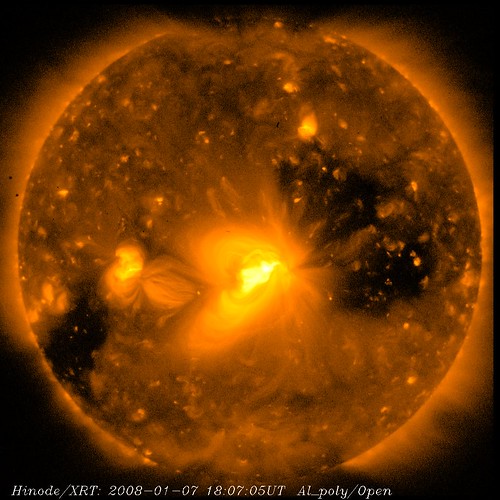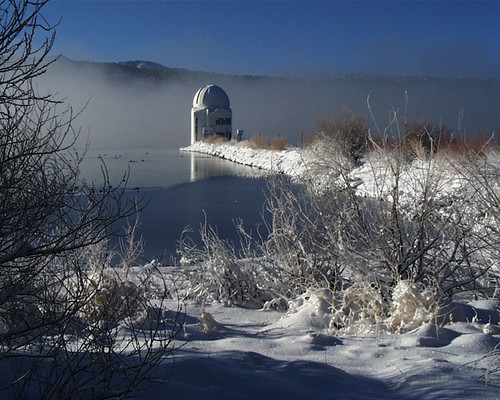Solar Cycle 24

A new cycle of solar activity, officially "Solar Cycle 24," is upon us according to a NOAA press release:
A new 11-year cycle of heightened solar activity, bringing with it increased risks for power grids, critical military, civilian and airline communications, GPS signals and even cell phones and ATM transactions, showed signs it was on its way late yesterday when the cycle’s first sunspot appeared in the sun’s Northern Hemisphere, NOAA scientists said.
“This sunspot is like the first robin of spring,” said solar physicist Douglas Biesecker of NOAA’s Space Weather Prediction Center. “In this case, it’s an early omen of solar storms that will gradually increase over the next few years.”
A sunspot is an area of highly organized magnetic activity on the surface of the sun. The new 11-year cycle, called Solar Cycle 24, is expected to build gradually, with the number of sunspots and solar storms reaching a maximum by 2011 or 2012, though devastating storms can occur at any time.
During a solar storm, highly charged material ejected from the sun may head toward Earth, where it can bring down power grids, disrupt critical communications, and threaten astronauts with harmful radiation. Storms can also knock out commercial communications satellites and swamp Global Positioning System signals. Routine activities such as talking on a cell phone or getting money from an ATM machine could suddenly halt over a large part of the globe.
The discussion on Slashdot ranged from light polarity to global warming to AIDS research, which may or may not be entertaining, depending on your point of view.
You can bet the Big Bear Solar Observatory will be watching this intently. It may be in California, but it’s run by the New Jersey Institute of Technology (NJIT).

Having your ATM machines go cold suddenly is probably because that location depends on a VSAT terminal to process transactions, which uses a geosynchronous communications satellite to connect to the banking system. If that VSAT network uses an AMERICOM satellite, hopefully it won’t be a problem (disclosure: AMERICOM underwrites this blog). The satellites that AMERICOM operates are designed to withstand the effects of extreme solar events, categories S5 and G5, and with more than the predicted number of events of all levels over the life of each satellite as part of the design. Electronic components that are known to degrade in the presence of solar radiation have been "oversized" to degrade acceptably and operate nominally during the expected radiation exposure associated with soloar storms. In addition, shielding is utilized to reduce the exposure of electronic components to the effects of solar radiation and geomagnetic storms.
As always, check SpaceWeather for the latest developments.

Well I really enjoyed reading it. This article offered by you is very effective for accurate planning.